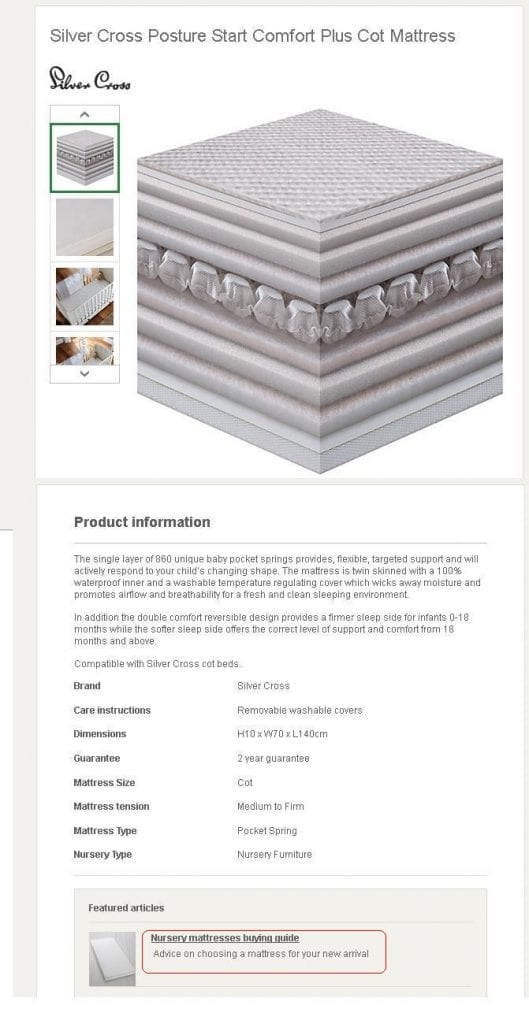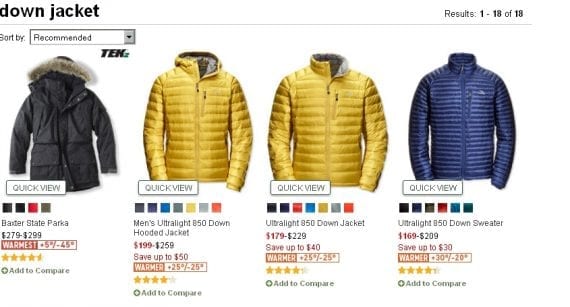Whether you’re selling eyeglass frames or earphones, swimsuits or swing sets, you’ll inevitably have shoppers unaccustomed to buying them online — or buying them ever. Others are trying to buy a gift that they know little about. All too often, such shoppers get lost in product descriptions. What does “ophthalmic frame” mean? What’s a “rear acoustic port”? A “monokini”? A “shiplap roof”?
You don’t want people to scoot away because they don’t understand the options. Equally, you don’t want people to misunderstand and buy the wrong item.
Uninformed People Shop — a Lot
What I see repeatedly is online shops assuming that shoppers know nearly as much about their items as the sellers do. Sometimes the shopkeepers are just oblivious to the ignorance of these consumers. Other times, those setting up the products for sale believe that everyone looking for what they sell is savvy and clued in. When told that their product descriptions have terms that need to be explained, they scoff, “Don’t be ridiculous. Everyone shopping at our site understands what’s what.”
Unfortunately, folks who are immersed in a specialized field tend to forget what it was like when they were learning. They tend to overestimate how much lingo their shoppers know. They also disregard problems shoppers have in relating facts or technical information to their own needs and desires. And they wrongly dismiss the possibility of someone who’s not an aficionado trying to shop for someone who is.
How to Clue Shoppers In
There are four main methods to help ensure that visitors fully understand your offerings. First, you can insert little explanations right in the product descriptions. Second, you can include explanatory resources, such as buyer’s guides. Third, you can add context in your descriptions that clarifies which item suits what purpose. And fourth, you can reword your blurbs so they use only everyday language.
Explanations right in the product descriptions work well if there’s just one point or two that might need clarification. Simply define the technical term with a dash or in parentheses. For example, instead of writing “ophthalmic frame,” you’d write “ophthalmic frame – glasses frame designed for prescriptions lenses” or “ophthalmic frame (glasses frame designed for prescriptions lenses).”
But it would be a clunky fix to do this in hundreds of places. So the second option, explanatory resources, might work better when you have loads of items that need the same set of clarifications. Here you could add a hyperlink for each term that shoppers might not understand, triggering an explanation that appears when the mouse points to the word or phrase. Alternatively, such a link would take the shopper to a glossary of definitions.
Buyer’s Guide
Some sites provide this second type of solution via a buyer’s guide that not only defines the terms but also explains which products are suitable for which purposes or which users.

Retailer John Lewis provides a buyer’s guide to nursery mattresses, and many other mattresses, explaining what to look for in this type of product and what various specialty terms mean.
—

The red box shows where John Lewis lets shoppers know about its buyer’s guide to nursery mattresses. Image: John Lewis.
I remember desperately wanting a buyer’s guide years ago, when I was shopping for down jackets during a bitterly cold winter. All the outerwear sites gave a number for the down fill of each item, such as 600, 700, 800 or 900, but none of the product descriptions said what outdoor temperature range those numbers correlated to. To buy with confidence, I wanted to see something like “rated for below-zero temperatures.” It wasn’t enough to know that 900 down fill was warmer than 800, and so on.

L.L. Bean now displays helpful numerical temperature ratings for its “warmer” and “warmest” down parkas.
—

L.L. Bean also explains in detail how it came up with numerical temperature ratings for parkas.
You can also orient your buyer’s guide to someone who is shopping for a gift, keeping in mind how little the shopper knows about the technicalities involved and how much he nevertheless want to buy something to delight the recipient.

If you were shopping for calligraphy nibs as a gift, you’d appreciate this guide from JetPens, which breaks down gift recipients by roles or special interests.
Clarifying through Context
Third, instead of a full-fledged buyer’s guide, add context within a product description to let people know not only the item’s specs, but also what or whom it would be suitable for. This helps put uninformed shoppers at ease.
For instance, an art supply site notes that one of its calligraphy nib sets “is ideal for student artists as well as calligraphers.” A dashcam listing on an electronics site says a certain model is “suitable for Uber, Lyft, taxis, limos, etc.” A description of a handkerchief hem skirt includes this: “comfortable and versatile for home or travel.” The key here is information at a higher level of generality than what the product is made of, its size, or other features.
The final method of pulling down barriers for clueless shoppers is simplifying the terminology used, eliminating troublesome expressions. For example, the glasses site on which I found the phrase “ophthalmic frame” would become clearer and more reader friendly by substituting “glasses frame for prescription lenses.” That works, incidentally, for the phenomenally successful online glasses vendor Warby Parker, which does not use the phrase “ophthalmic frame” anywhere on its site.
You’ll Still Get Questions
Even with the clearest descriptions and supplementary explanatory resources, shoppers will have questions. Receiving questions about an item usually means the consumer is interested and close to making a buying decision. It may not be practical for your site to do what Amazon does in this regard: display questions and answers for other shoppers.
Nevertheless, if you keep getting the same questions about an item, you likely need additional clarifications.




